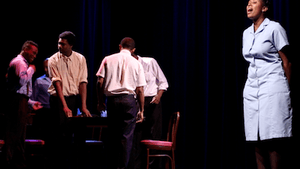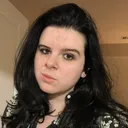Stay in the Loop
BSR publishes on a weekly schedule, with an email newsletter every Wednesday and Thursday morning. There’s no paywall, and subscribing is always free.
Beyond the boardwalk
Scribe Video Center presents 'Our Side: The Other Atlantic City'

The voices behind the new documentary Our Side: The Other Atlantic City, directed by T.C. Owens and Ellen Reynolds, want you to know there is another side to the New Jersey resort town, one often untold in history books and unseen in vacation brochures. Tourists come and go, sometimes taking multiple trips back and forth every season, yet never venturing past the boardwalk blocks.
Staging their lives
However, away from the ballroom entertainments and clanging of slot machines, real people live in this tightly knit, thriving community year-round. The film follows a community-led theater production based on Turiya S.A. Raheem’s book, Growing Up in the Other Atlantic City: Wash’s and the Northside, and adapted for stage by Stockton College theater professor Pamela R. Hendrick. Composed entirely of Atlantic City natives and including firsthand interviews that serve as oral histories, the film highlights the play’s cast members and Raheem’s relatives.
Incorporated in 1854, families have called Atlantic City their home for generations. During the Great Migration, when many black people migrated north from southern states, the city’s tourist economy beckoned. But despite dominating its workforce, the black community was segregated from everyone else. Once the Hotel Shelborne — now Bally’s — was built, one relative of Raheem recalls the police enforcing racial segregation by instructing black beachgoers to bathe on the far side of the Missouri Avenue pier.
As a result of racial discrimination, the black community grew their own economy. They “had their own dentists, doctors, corner stores, and grocery stores,” explains Arnelle Lyles, who performs the character Alma in the play.
"History erased"
Although the casino industry wrestles with maintaining its presence in the city, the residents have remained. To illustrate how decades of boom-and-bust recessions impacted the community, the film shows a visual dichotomy between old photographs of popular neighborhood landmarks and a montage of abandoned lots and decaying buildings now occupying those spaces.
“When I see what it is now, I think of history erased,” explains the play’s director, Travis Love, while standing on the sidewalk of Rhode Island Avenue near the site of his childhood home.
“They knocked down housing for a parking lot for Revel,” adds Sparkle Prevard, who stars in the play as Lily and also grew up with Love. A $2.4 billion project, the Revel casino closed within two years of opening its doors. Around the same time, the Atlantic Club, Showboat, and Trump Plaza casinos also shut down. Together, the four casinos provided 8,000 jobs, which comprised a quarter of the city’s workforce.
But the community is determined to grow and thrive again. Prevard, for instance, is a community organizer because she’s passionate about her hometown and listening to the people who live in it.
“But it’s going to take the collective,” stresses Love while getting a haircut in a local barbershop. “The seed of it is we have to believe that we can actually affect change, that we can make a difference.”
The film runs 30 minutes and will be screened with another short documentary, The Sara Spencer Washington Story, which chrionicles the life and activism of the African-American Atlantic City native and self-made cosmetics millionaire.
What, When, Where
Our Side: The Other Atlantic City. T.C. Owens and Ellen Reynolds directed. Media Mobilizing Project. Screened with The Sara Spencer Washington Story, January 26, 2017, at the Scribe Video Center, 4035 Walnut Street, Philadelphia. (215) 222-4201 or scribe.org.
Sign up for our newsletter
All of the week's new articles, all in one place. Sign up for the free weekly BSR newsletters, and don't miss a conversation.

 Adryan Corcione
Adryan Corcione